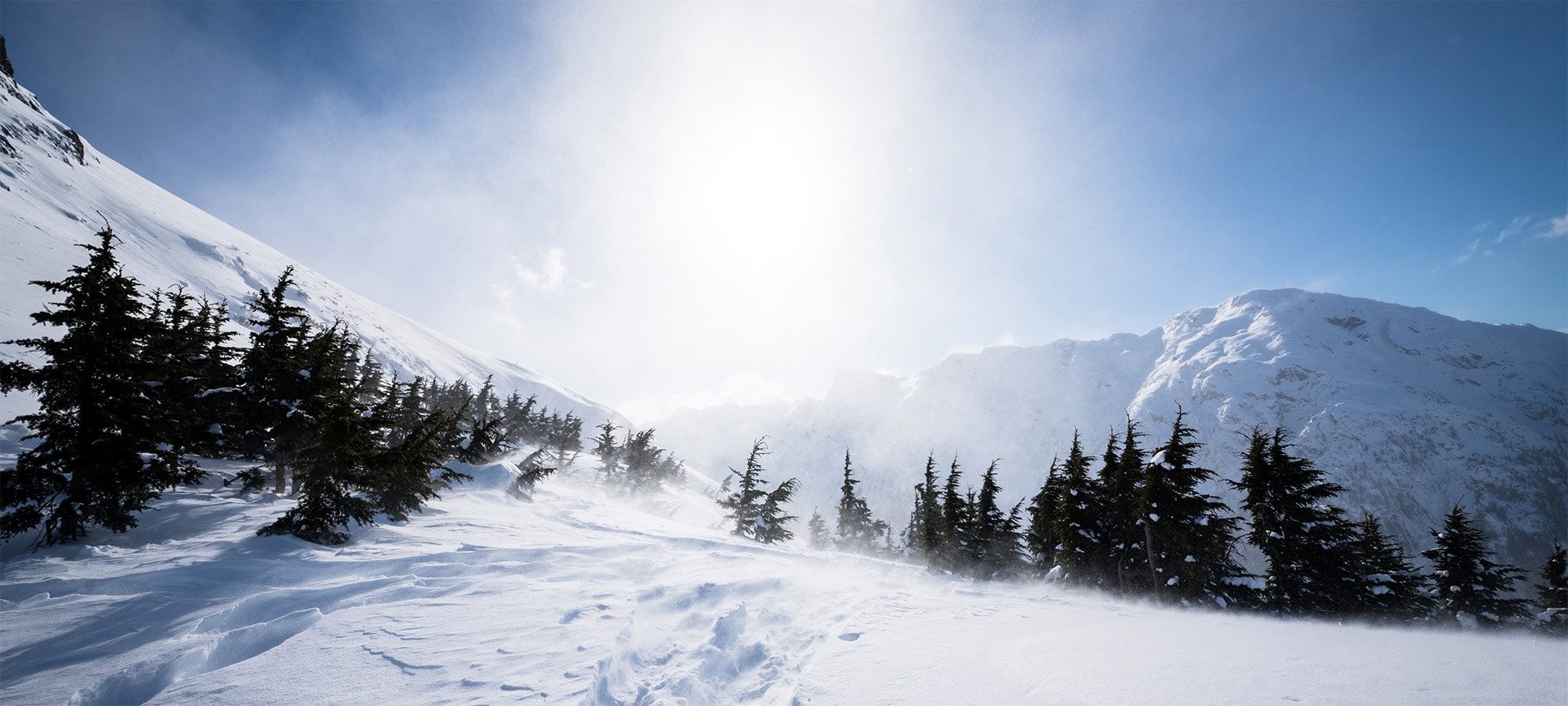I can’t count the number of times that I have sworn off winter goat hunting while shivering on the side of a white mountain. There is very little enjoyment to be had chasing late season mountain goats. The hunt is a test of your will. It requires a digging in of your heels, patiently suffering the conditions in the hope that everything might align just right so you can accomplish what you set out to do.

If I go out for winter goats again this season, it will mark my sixth journey into those mountains for more punishment. I say “if” but at this point it’s almost a sure thing that I will go. No matter how much I despise those nights spent in an icicle-covered tent or sliding my feet into brittle, frozen boots in the morning, I know I will go back for more.
Winter goat hunting in B.C. isn’t a popular hunt. The general season takes place in a small coastal area on a fjord that borders Alaska. Because of the re- mote location and the ruggedness of the mountains, the season is long, running from August until the end of February. Due to snow conditions and avalanche danger, most hunters tend to go as late as possible when the snowpack is more stable. Temperatures can vary from -4 and 32 degrees, but the biggest logistical challenge is without a doubt the snow conditions.
The snowpack will determine which of many possible modes of travel is best. Bad snow can make or break the hunt. I have tried accessing that country in every way I can think of: snowshoes, crampons, skis, pulk sleds and pack rafts. It is more mountaineering expedition than traditional hunt. Even with perfect conditions, you will have to fight excruciatingly hard for every inch of ground and foot of elevation to get into the zone the goats call home.
In Douglas Chadwick’s book, A Beast the Color of Winter, he describes in detail the constant onslaught of avalanches that goats face during the winter months and attributes a high proportion of winter mortality to these sudden slides. Slides are a threat to both goats and hunters alike and are not some- thing to be taken lightly. I don’t like to admit it, but for my first couple years hunting up there, I lacked proper avalanche training, nor did I carry any ava- lanche gear. I was extremely foolish and I was very lucky. I have since educated myself appropriately and carry myself into that country with the necessary respect it demands.
The mental strain involved in this hunt is hard to describe and likely lands differently on each hunter. For me, the endless cold and the shear effort involved in doing anything in those conditions for ten days straight is brutal. Battling the constant hunger that eats away at you when frozen bars and dehydrated meals just don’t replace the calories you’ve burned is a slog.
I’ve survived these things, although barely, and then experienced the anguish of having my release freeze at full-draw with a long-haired billy standing broadside at 35 yards. This hunt has a remarkable way of wearing you down and freezing you out. Despite all the challenge and misery this hunt involves, that mountain will inevitably lure me back again to chase goats with a weapon or camera. I feign reluctance at the thought of going back, but the reality is that I am already excited at the thought of the hunt and strategizing how to do it better.

At its core, this hunt is the distillation of everything I crave from hunting taken to the nth degree. There is no faking anything out there, no shortcuts to be found. It challenges my physical fitness, my mental stamina, and my ability to learn, adapt and overcome. It filters out the imposters and leaves no quarter for any of the bullshit that can pollute our daily lives. This yearly pilgrimage helps me under- stand what I am capable of. A good friend of mine often reminds me that “persistence is deadly.” That couldn’t be more accurate on a hunt like this. More often than not, it’s simply a matter of endurance.

